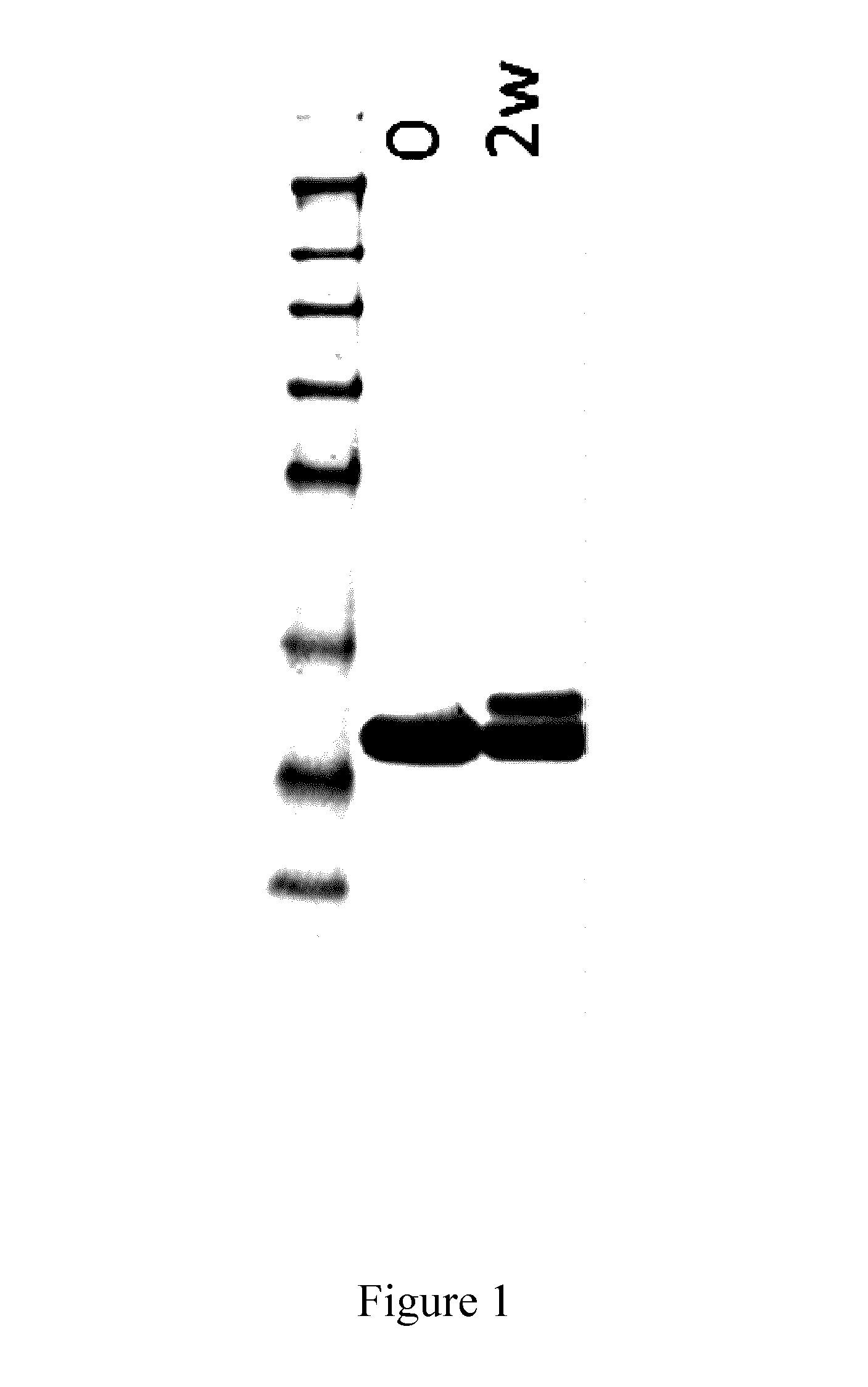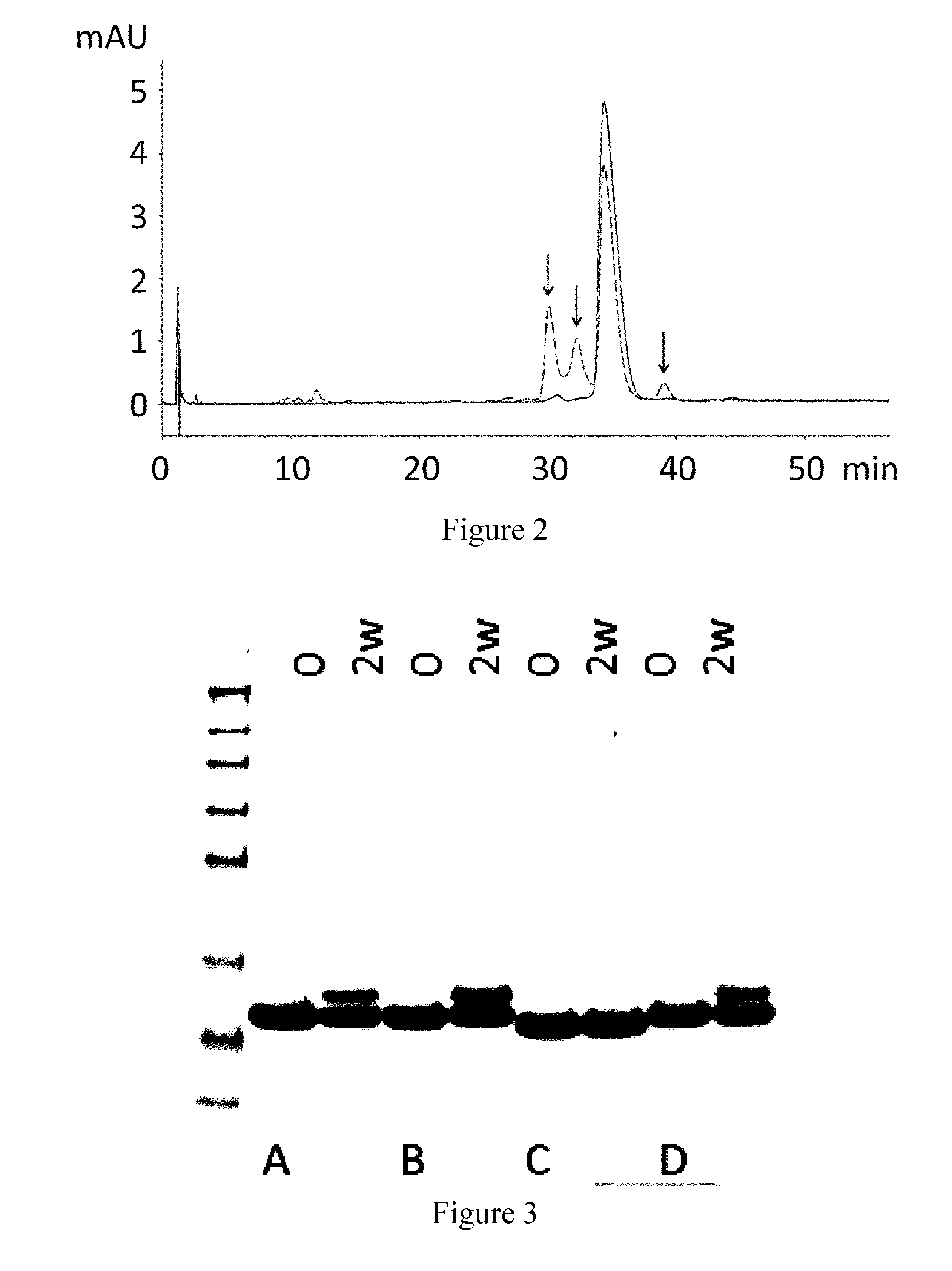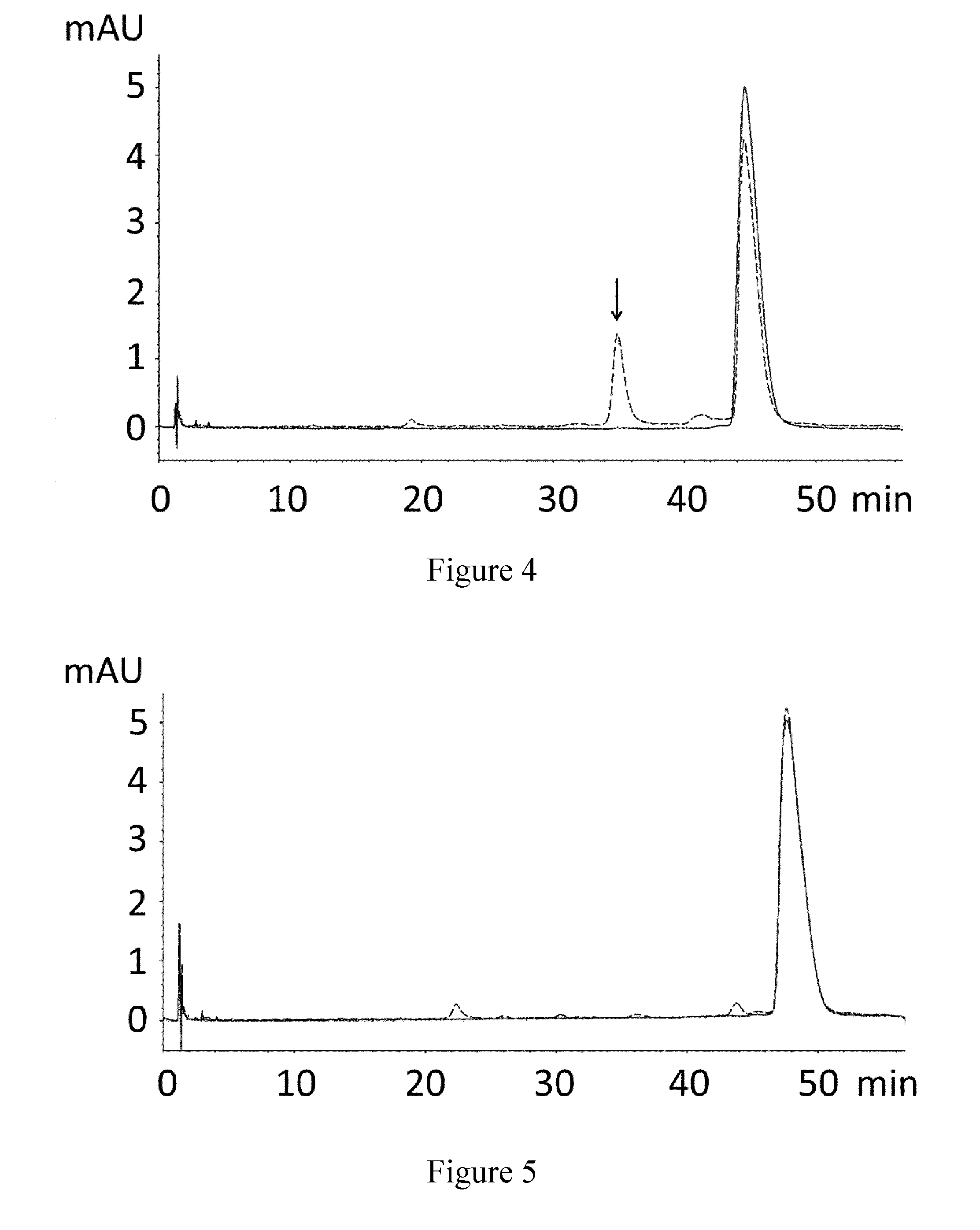Stable polypeptides binding to human complement c5
a polypeptide and complement technology, applied in the field of polypeptides, can solve problems such as tissue damage, and achieve the effects of improving stability, c5 binding capability and inhibition of hemolysis in vitro, and improving stability of c5 binding compounds
- Summary
- Abstract
- Description
- Claims
- Application Information
AI Technical Summary
Benefits of technology
Problems solved by technology
Method used
Image
Examples
example 1
Stability Test of Known C5 Inhibitor
[0207]The C5 binding compound designated PSI0242 (SEQ ID NO: 249) was formulated in 25 mM NaP / 125 mM NaCl pH 7.0 and subjected to an accelerated stability study for 2 weeks at 37° C. The stability was measured by the appearance of new variants after the stability testing by SDS-PAGE and Reversed Phase HPLC (RPC). In both analyses the initial sample and the one subjected to the stability study were run in parallel. For the SDS-PAGE, 7.5 μg protein was loaded into each well. The RPC was run on an Agilent 1100 HPLC using a Mobile Phase A consisting of 0.1% trifluoroacetic acid (TFA) in water, and using a Mobile Phase B consisting of 0.1% TFA / 45% MeOH / 45% isopropylamine (IPA) / 10% water.
[0208]The results show that new forms of the protein are formed during incubation, these new forms visualized as bands in SDS-PAGE (FIG. 1) and as new peaks in Reversed Phase HPLC (RPC) chromatograms (FIG. 2). In FIG. 2, the main peak after 2 weeks incubation correspond...
example 2
Stability of Modified C5 Binding Polypeptides and Compounds
[0210]Modified C5 binding polypeptides and compounds were synthesized and purified essentially as described in WO 2013 / 126006.
[0211]Briefly, DNA encoding C5 binding Z variants was E. coli codon optimized and synthesized by GeneArt, GmbH. The synthetic genes representing the C5 binding Z variants were subcloned and expressed in E. coli.
[0212]Intracellularly expressed Z variants were purified using conventional chromatography methods. Homogenization and clarification was performed by sonication followed by centrifugation and filtration. Anion exchange chromatography was used as capture step. Further purification was obtained by hydrophobic interaction chromatography. The purifications were executed at acidic conditions (pH 5.5). Polishing and buffer exchange was performed by size exclusion chromatography.
[0213]The purified proteins were formulated in 25 mM NaP / 125 mM NaCl pH 7.0 and subjected to an accelerated stability study...
example 3
Binding of Modified Compounds to Human C5
[0220]Human serum albumin was immobilized to Amine Reactive 2nd generation (AR2G) Dip and Read Biosensors (Pall Life sciences (ForteBio) Cat #18-5092) by amine coupling. PSI0242 (SEQ ID NO: 249; 1 μM) and C5 binding compounds (1 μM) in read buffer (HBS-EP Buffer ready-to-use 200 ml, GE Healthcare #BR100188) were loaded, each onto a separate sensor with HSA, for 120 seconds followed by a base line recording for 60 seconds in read buffer before being subjected to human C5 (Quidel Cat #403) in concentrations ranging from 0.79 nM to 25 nM in read buffer with a regeneration cycle and a base line recording between each concentration. Regeneration conditions for the sensors were 10 mM Glycine, pH 2 (three pulses with 30 seconds and running buffer for 60 seconds). Each spectrogram was reference subtracted against an analogous construct containing an albumin binding domain (SEQ ID NO: 250) but without the C5 binding capacity. The data were analyzed ac...
PUM
| Property | Measurement | Unit |
|---|---|---|
| Fraction | aaaaa | aaaaa |
| Fraction | aaaaa | aaaaa |
| Fraction | aaaaa | aaaaa |
Abstract
Description
Claims
Application Information
 Login to View More
Login to View More - R&D
- Intellectual Property
- Life Sciences
- Materials
- Tech Scout
- Unparalleled Data Quality
- Higher Quality Content
- 60% Fewer Hallucinations
Browse by: Latest US Patents, China's latest patents, Technical Efficacy Thesaurus, Application Domain, Technology Topic, Popular Technical Reports.
© 2025 PatSnap. All rights reserved.Legal|Privacy policy|Modern Slavery Act Transparency Statement|Sitemap|About US| Contact US: help@patsnap.com



